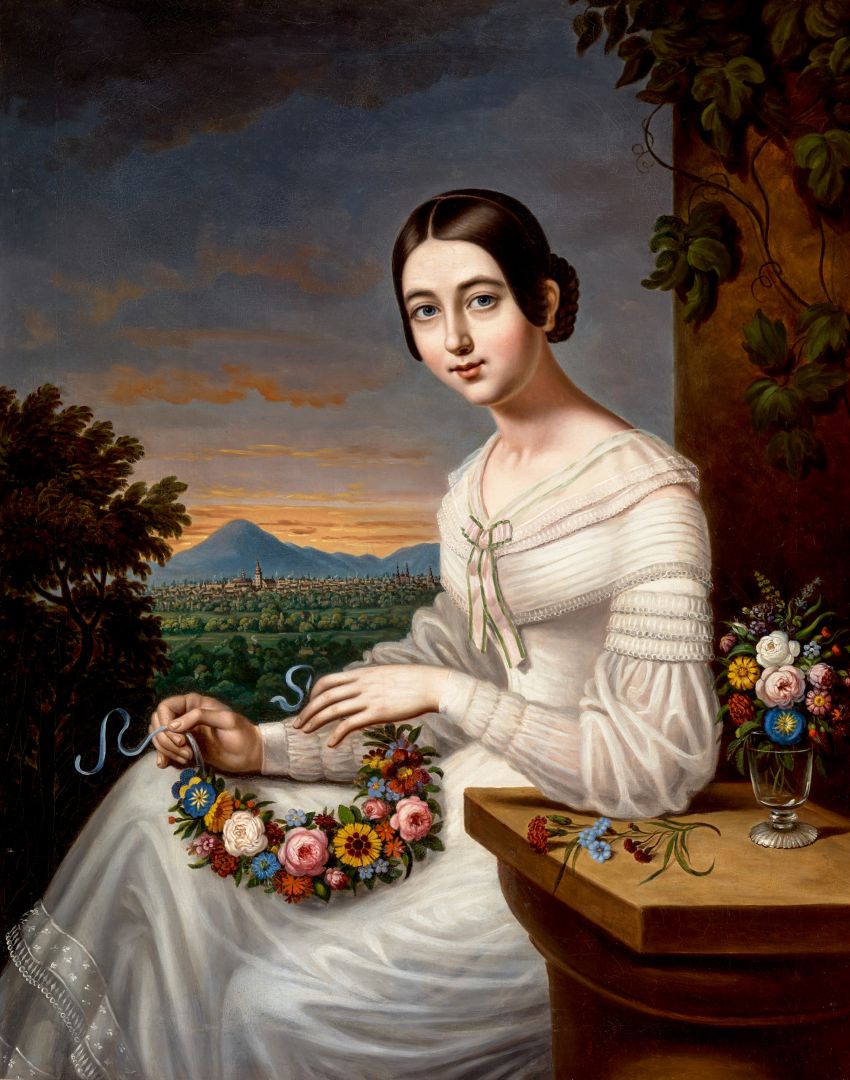Hall 1 - 3. view
Flora
ROMBAUER, JÁNOS (1782–1849)
Flora, c. 1840
oil on canvas, 104x82.5 cm; unmarked
Fine Arts Collection, Inv. No.: 84.57.
This moving and charming portrait painting used to greet visitors upon entering the exhibition of former gallery of the Herman Ottó Museum. The research history of the painting is also a prime example of the professional work carried out by the museum’s former colleagues. Following its 1984 acquisition from a private individual in Tolcsva, the painting was restored and identified due to the efforts of the museum staff, especially those of Gertrud Goda.
The heavily damaged original artwork was carefully restored during the second half of the 1980s, however it was devoid of any signature. The only available point of reference was the panorama in the background, which depicts the landscape of Prešov. Museologists identified János Rombauer as the master behind this artwork, which has been since confirmed. In 2010, the painting became an officially certified work of art at the Rombauer exhibition hosted in the Slovak National Gallery in Bratislava.
The Levoča-born artist settled in Prešov in 1824. He started a family and worked as a popular portrait painter there until his demise. ‘This intimate, well-crafted artwork suggests a strong personal bond between the painter and the model. This charming young lady sitting in front of the often depicted landscape of Prešov was most likely a family member. Despite its directness, the face does appear to be a little schematic. It is possible that the artist wanted to evoke the memory of his daughter, who passed away early’ – surmised Gertrud Goda.
It is also possible to interpret the painting symbolically. The figure of a young girl preoccupying herself with flowers is a conventional allegory for the season of spring and the renewal of life, evocative of the mythological goddess Flora. However, the bouquet on the table, with the couple of wilting flowers placed next to it reminds the viewer of the fleeting nature of life, conveying the moral message to lead a life that will ultimately lead to salvation.
Andrea Pirint
